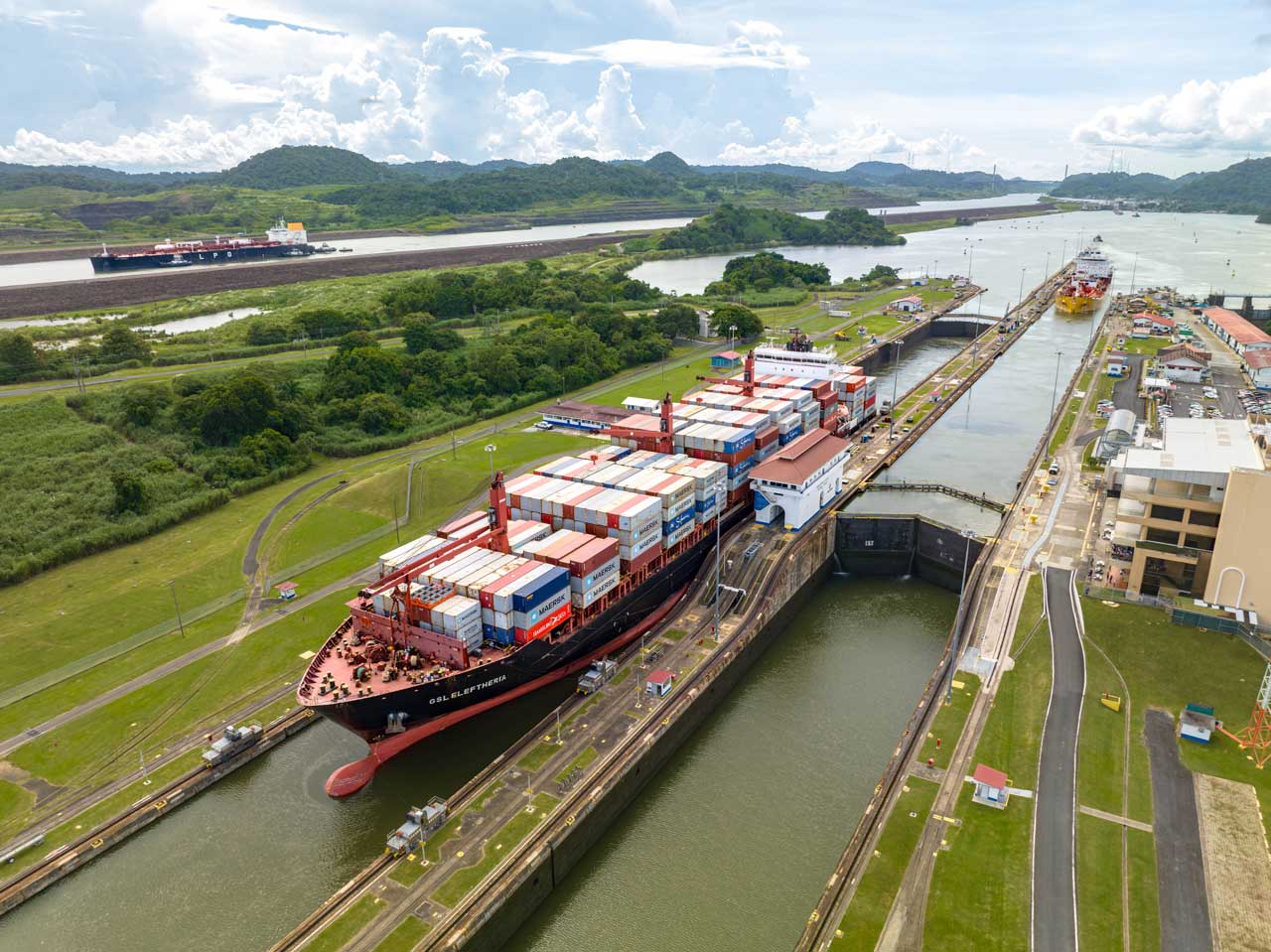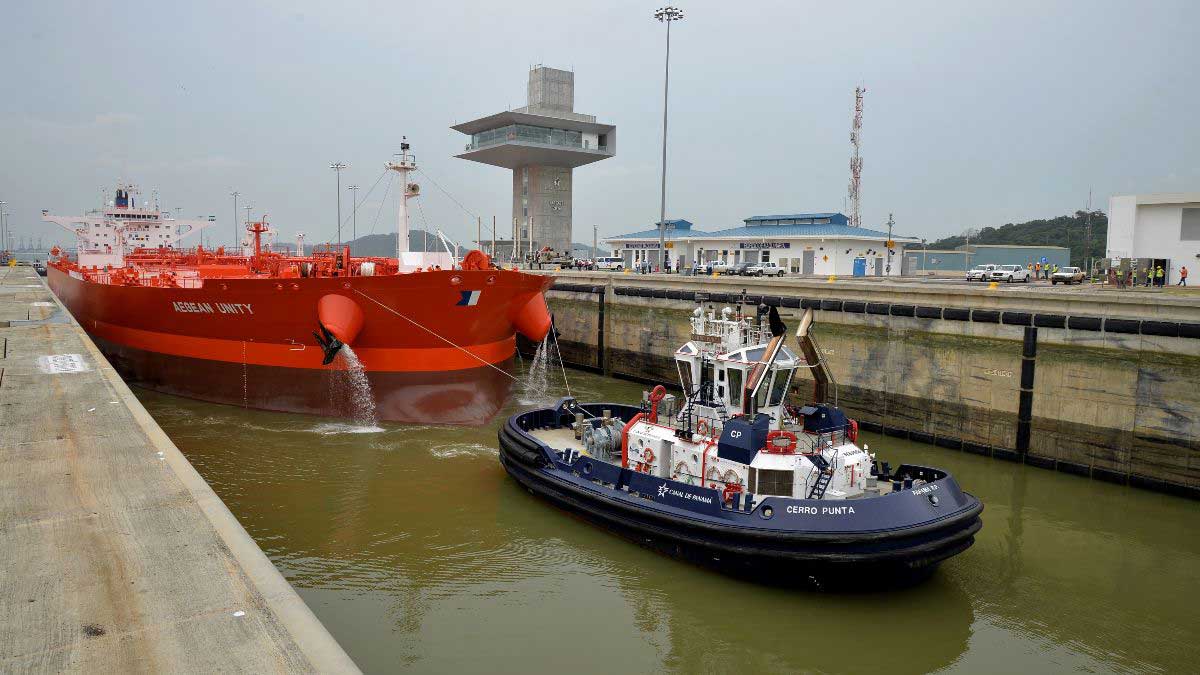AIS Allows ACP and Transiting Vessels to View Canal and All Canal Traffic with Precision
Early Implementation Helps ACP to Improve Safety, Security and Resource Management
Panama City, Panama, July 1, 2003 – Picture a precise navigation system with an overlaid electronic chart that includes an icon for every ship approaching and transiting the Panama Canal. Each icon provides the ship name, size of the ship, course and speed – information that improves safety and security, and will assist in the management of critical canal resources. The Panama Canal Authority (ACP) announced today the formal implementation of the Automatic Identification System (AIS) – a revolutionary navigation aid that will do just that. AIS is now required equipment for all vessels transiting the waterway.
Like a hawk flying high above relaying to each vessel what’s coming and who’s ahead, the AIS will be of great value to the ACP and shippers. Many of the challenges of navigating the Canal will be alleviated because Canal pilots will now be able to better view all traffic transiting through the Canal – and it will be particularly valuable in narrow passages and low-visibility situations. In addition, the ACP will be able to improve its management of the Canal’s traffic flow and reduce the length of intervals between transiting ships.
The AIS works in real time and transmits data to all AIS-equipped ships or shoreside facilities within VHF radio range, providing Canal authorities with a complete and precise view of all traffic in the Panama Canal. Position and other data are distributed instantaneously from the ship’s sensors into the AIS system, where it is formatted and transmitted in a short data burst on a dedicated VHF radio channel.
“I am very proud of our maritime operations personnel. Their tenacity in getting this system up and running – considerably ahead of schedule – shows their dedication to continue to improve safety, security and waterway operations. Canal safety, reliability and efficiency are our top priorities and we will continue to look for other cutting-edge technologies that help us serve our customers,” said Canal Administrator, Alberto Alemán Zubieta.
The AIS automatically identifies a ship, type, position, course, speed, navigational status and other safety-related information through new software located onboard and onshore. All ships transiting Canal waters over 300 net tons or more than 20 meters in length must now be equipped with an AIS system that meets the standards set by the International Maritime Organization (IMO). With regard to combined and multiple units (tug and tows), only the tug will be required to be equipped with an AIS.
The Canal implementation of AIS is well ahead of the 2004 IMO deadline. According to the International Convention for the Safety of Life at Sea (SOLAS), all vessels will be required to carry AIS systems effective on the date of the first safety equipment survey between July 1, 2004 and December 31, 2004. Between Panama Canal Authority’s July 1, 2003 implementation date and the dates required by SOLAS, for those vessels not yet carrying AIS, the Panama Canal will provide portable AIS vessel tracking units for a fee of $150.00.
Other recently implemented ACP safety measures include the modification of the pre-arrival notification period. Vessels approaching the Panama Canal must now communicate with the ACP no less than 96 hours in advance of arrival in the Canal. The previous pre-arrival notification period was 48 hours.
About the Panama Canal
The Panama Canal Authority is the autonomous agency of the Government of Panama in charge of managing, operating, and maintaining the Panama Canal. The operation of the Panama Canal Authority is based on its organic law and the regulations approved by its Board of Directors. For more information, please refer to the website: www.pancanal.com.
The Authority’s responsibility to the Panamanian people is paramount. The Canal belongs to the people and benefits from the Canal should accrue to as many Panamanians as possible. The Authority will plan its future so that it will continually contribute to the economic development and welfare of the citizens of Panama.
For nearly 90 years, the Panama Canal has served as the global gateway – a pathway for the shipment of major world commodities. Since the end of 1999, the ACP assumed the responsibility for the management, operation and modernization of the Canal as well as the protection and conservation of its watershed. In the past four years, the ACP has made significant strides – shifting to a market-oriented business model focused on customer service and reliability, making major capital investments for new and modern equipment and machinery, increasing safety and operational efficiency for customers, decreasing the time it takes ships to travel through the Canal and widening and deepening sections of the waterway. An important transportation link, the Canal services more than 140 different transportation routes from every corner – It is where major trading routes of the world connect and intersect providing safe, reliable and secure passage for all vessels.




